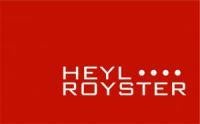The 2011 amendments to the Illinois Workers’ Compensation Act gave employers more options for controlling and challenging past and future medical treatment with the use of a utilization review (UR). The amendments, however, also created potential pitfalls for employers challenging medical treatment without a utilization review. While we highlighted these potential pitfalls in our newsletters and seminars following the 2011 amendments, we would like to take an opportunity now to address how claimants’ attorneys are utilizing the amendments and a 2013 Commission decision on UR reports to their benefit. We will also discuss how claimants’ attorneys have argued that Section 8.7 of the Act requires the respondent to obtain a utilization review to challenge whether medical treatment is reasonable and necessary.
Medical treatment is denied for a variety of reasons and the basis of the denial helps determine what evidence will be necessary to support that denial. There are two general ways to attack medical treatment. The medical treatment at issue may be excessive or not reasonable and necessary, which implicates a utilization review, or the treatment may not be causally related to the accident, which implicates an IME. Thus, the denial of requested medical treatment can involve the use of a utilization review or an IME, or in some instances, the use of both.
UR Reports – Section 8.7
Section 8.7 of the Act defines a utilization review as “the evaluation of proposed or provided health care services to determine the appropriateness of both the level of health care services medically necessary and the quality of health care services provided … based on medically accepted standards.” 820 ILCS 305/8.7(a). Utilization techniques include prospective review, second opinions, concurrent review, discharge planning, peer review, independent medical examinations, and retrospective review.
Section 8.7(i)(3) states that “[a]n employer may only deny payment of or refuse to authorize payment of medical services rendered or proposed to be rendered on the grounds that the extent and scope of medical treatment is excessive and unnecessary in compliance with an accredited utilization review program under this Section.” 820 ILCS 305/8.7(i)(3). While a utilization review is not dispositive and does not address causation, if it is admissible at trial, the Commission shall consider it along with all other evidence.
The purpose of a section 8.7 utilization review is to determine if the recommended medical treatment is excessive or unreasonable. The utilization review does not address the issue of causation. Again, an employer may only deny payment or refuse to authorize payment of services rendered or proposed to be rendered on the ground that the extent and scope of the treatment are excessive and unnecessary if such opinion is in compliance with an accredited utilization review.
Section 8.7(i)(5) states that nothing in this section may be construed to diminish the rights of employees to reasonable and necessary medical treatment or employee choice of health care provider under Section 8(a), or the rights of employers to medical examinations under Section 12. If a utilization review is obtained, it should be reviewed by the IME physician (if the case warrants a Section 12 exam) as the IME opinion could enhance the credibility of the utilization report. Having the IME physician comment on the utilization review may also eliminate the need for a deposition of the UR physician.
Parisi v. Gem Construction Co. – The Commission’s View
The Commission’s decision in Parisi v. Gem Construction Co., 13 I.W.C.C. 489 (May 3, 2013), highlights the risks one may encounter in the use (or non-use) of utilization reviews and independent medical examinations (IME) in denying medical treatment in disputed cases and defending that denial at trial. Decisions such as Parisi are frequently cited by claimant attorneys in negotiations, pre-trial arguments, and in proposed decisions to oppose an employer’s efforts to contain medical expenses in cases where no UR report is offered.
In Parisi, the claimant was a working foreman who had been employed by the respondent for over 21 years. His job duties consisted of operating a Bobcat for 75-80 percent of the work week with additional job duties that included lifting and using a jackhammer and saw. On the day of the accident, the claimant reported that he was lifting a cast iron catch basin and felt a big pop in his back, and experienced immediate pain. The claimant denied any prior injury or problem with his back, although it was shown the claimant had a workers’ compensation injury and settlement 15 years earlier. Accident was not in dispute.
Following the injury, the claimant underwent conservative treatment before undergoing a Section 12 IME. The IME physician opined the described event was sufficient to cause a muscle strain, but said that the subjective complaints were not supported by the diagnostic testing and clinical evaluation. The IME physician opined that the claimant was at maximum medical improvement, did not need further medical care, and that any ongoing complaints and recommended medical treatment were not causally related to the accident. The claimant’s treating physician had recommended a work hardening/strengthening program in order to return claimant to full time employment. In reliance on the IME, this treatment was denied and TTD benefits were terminated as of the date of the IME.
At trial, the claimant sought authorization of the recommended work hardening program. The claimant’s treating physician opined that the mechanism of injury caused the back pain complaints and that the work hardening program was reasonable and necessary in order to return the claimant to full duty. The respondent argued that the claimant was at MMI and that no further medical treatment was necessary based on the IME opinions rendered. It also argued that the claimant spent 75 to 80 percent of the time in a sitting position while operating a Bobcat. Questions were also raised as to the claimant’s credibility.
The Commission found in the claimant’s favor and found his testimony and reports of injury were consistent and credible. The IME physician’s report said the described mechanism of injury was sufficient to cause a back injury such as a muscle strain despite the MRI report not showing any specific disc abnormality. The IME physician also wrote that causality was uncertain based on the medical records and the claimant was at MMI. The Commission agreed that the claimant was sitting 75 to 80 percent of the time, but acknowledged that meant the other 20 to 25 percent required lifting. The Commission referenced the treating physician’s opinion that the work hardening program was reasonable and necessary to return the claimant to full duty and noted there was no offer of light duty by the respondent. Of significance, the Commission pointed out that the respondent had failed to obtain a utilization review to provide proof or evidence that the medical treatment requested (work conditioning) was excessive or unreasonable. The Commission concluded that, without a utilization review issuing a non-certification of the proposed work conditioning program, the claimant was entitled to participate in such program.
In Parisi, the treating and IME physicians stated that the mechanism of injury was sufficient to cause the claimant’s back injury. The IME physician stated there were no MRI abnormalities except for age-related changes, but also stated that causality was uncertain based on the records. Given the stipulation to accident and the fact that the claimant’s duties were not 100 percent sitting, the work hardening recommendation was reasonable and necessary to relieve the effects of the claimant’s injury. The Commission found that this treatment was denied as not needed or necessary based on the IME opinions and the amount of time the claimant spent in a seated position. The Commission held that the medical evidence showed such treatment was reasonable and necessary and there was no utilization review to provide evidence that this treatment was excessive as required by Section 8.7.
Parisi in Practice
Claimants’ attorneys have used the Commission’s Parisi decision and the language of the 2011 amendments to argue that an employer cannot challenge treatment as unreasonable or unnecessary unless they obtain and present an admissible utilization review report at trial. Medical expenses under Section 8(a) of the Act are limited to those which are “reasonably required to cure or relieve the effects of his or her injury.” 820 ILCS 305/8.7(i)(4) (emphasis added).
The Commission’s decision in Parisi shows the risk of attempting to attack the reasonableness and necessity of treatment based on a Section 12 IME opinion only. Although the Commission found that the IME opinion did not definitively deny causation, the decision raises the question of whether a utilization review and an IME are both necessary. If the medical treatment is believed to be excessive or unreasonable, a utilization review addresses that issue. If that utilization review is in compliance with accredited utilization review standards, that determination is to be considered at trial with all other medical evidence. The medical treatment may be reasonable and necessary, but not necessarily causally related, in which case that issue must be addressed by an IME.
Although Parisi is a Commission decision and is non-binding on the courts, it nevertheless does provide some insight into how the Commission may view the Act’s UR provision and its operation.
Recommendations for URs
In a seminar conducted by Heyl Royster shortly following the 2011 amendment to the Act, we made several observations regarding utilization reviews.
-
Utilization reviews are useful in cases involving prolonged chiropractic care and physical therapy treatment, or other such prolonged care or treatment.
-
Utilization reviews are not likely to prevail where surgery or other invasive treatments are recommended and there is credible evidence of chronic pain or other disability. If causation is in dispute, an IME opinion addressing that issue is necessary.
-
Utilization reviews cannot address causation, which requires an IME.
Based on our collective knowledge and experience since that time, these continue to hold true.
An employer is required to pay necessary medical expenses reasonably required to cure or relieve the effects of the accidental injury. 820 ILCS 305/8(a). If there is a dispute as to recommended medical treatment, the basis of the denial will determine the evidence needed in support. Denial of treatment that is excessive or unreasonable must be supported by a utilization review while a denial based on the treatment not being causally related to the accident requires an IME.
In certain cases it may not be appropriate to obtain a utilization review from a cost or strategy standpoint. The Commission’s decision in Parisi, while not precedent and distinguishable from many of our cases, highlights the importance of considering a utilization review whenever a denial of medical benefits is being contemplated.
As always, please do not hesitate to contact any member of our statewide workers’ compensation team if you would like to discuss this further.
It is important to use high quality utilization reviews performed by doctors who are of the same qualification as treating doctors, well versed in treatment standards, and who write thorough reports.




 />i
/>i

